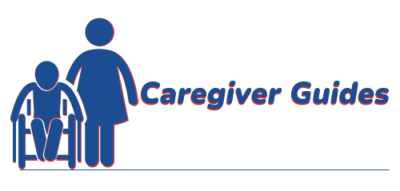
A hospital stay, chronic disease, or a long lasting illness can drain all the energy out of a person, especially if they are up in age, and leave them essentially bed bound. This makes the role of the caregiver much harder, not only because all care and activities of daily living need to be done in the bed, but also, lying in bed for extended periods of time can lead to further health complications such as pressure or bed sores, pneumonia, and further weakening of the musculo-skeletal system. Plus, as a loved one, you want to see the patient improve, get stronger and move more toward independence.
The overall goal, if its medically safe, is to get the person out of bed and back to some semblance of normal. But how do you get someone one stronger who is too weak to exercise? What’s the safest way to get a person to the place where they even want to exercise?
How to Approach Exercises For Seniors That Are Weak From Being in Bed
Here in the 21st century, our concepts of exercise may be influenced by all the marketing we see online and on the TV that focuses around abnormally fit 20 somethings having a blast extreme sporting their way to happiness. Since the days of Jack LaLanne, exercise has mostly become synonymous with “pushing yourself to the limit” while wearing spandex, sweating buckets, with a smile on your face. But this is a very narrow concept of fitness. Unfortunately, it skews our idea of what exercise is and is totally inappropriate for most of the population and especially those that are ill or generally weakened.
When caring for a loved on who is generally weak and may be recovering from an illness or surgery, its best to keep in mind that progress will be slow and that there may not be that much motivation on their part to do much. And that’s fine. Because they’re dealing with a limited amount of energy and may become fatigued quickly if they do too much.
Increased Activity = Exercise
Changing the way we look at exercise is a good starting point here. When we ask a person in bed to do “exercise” they will probably immediately shut down. This is because in their mind, “exercise” is hard and for the “young”. But if we mentally step back and ask ourselves “what is it that I actually want to help them do better?” We get a better understanding of how to approach the idea of exercise with loved ones in this type of scenario.
In most cases, we want our loved ones to be able to “get out of bed” or “walk to the toilet” or even “come out to the dining room”. We want them to do “normal things”, not run a marathon or lift a certain amount of weight, right?
So, a good way to get them stronger to do these types of things is to get them moving more. And this moving more could simply be sitting up on the side of the bed for meals or bathing. And, while they are sitting at the edge of the bed, have them participate in these activities rather than doing the activity for them. Then it’s back to bed until the next “session” or meal, or what have you.
Simple activities like this are more “palatable” because they aren’t “exercise”. They are functional activities that your loved one understands as “normal” and that can be increased with frequency without even mentioning the dreaded word “exercise”.
As all people and conditions are different, a person may be too weak to sit unsupported on the edge of the bed. But this doesn’t mean that there is not an option to get them more active. Whether a person is too weak or not, a natural progression from sitting edge of bed for meals and bathing is sitting out of bed in a wheelchair or bedside chair. This may require a Hoyer lift or physical assist to transfer, but, it does increase the person’s activity, especially if they are helping with the transfer.
Sitting out of bed in a wheelchair for specific periods of time on a daily schedule is a natural progression and has multiple benefits. Improving trunk strength, respiration, digestion, and even can improve mental outlook. Plus it can allow for a change of scenery and promote socialization.
From there the progression might be from a wheelchair to a recliner chair for extended periods of time. The recliner offers the opportunity to socialize and rest in the “family area” of the home (although it may add to the caregivers tasks of toileting) and extend the time a person is out of the bed. Also of benefit can be that the care recipient participation in transfers and other activities of daily living may, depending on their condition and abilities, improve lower extremity strength and prepare the loved one for walking.
Keep in mind that any activity can be scheduled and performed for a specific period of time to limit over exertion. Scheduling activities and limiting their duration also allows the caregiver more control over their time and duties as not to get stretched too thin.

Bryan Williams
Physical Therapist
is a licensed therapist with near 30 years of professional experience treating a diverse patient population in a multitude of settings. With simple strategies, he educates and empowers his clients with simple strategies to help them move better and with less pain.
